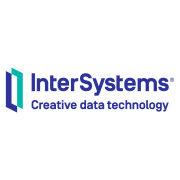Embedded Databases are lightweight databases integrated into applications, offering efficient data management capabilities without requiring separate database servers. Perfect for IoT devices and mobile apps, these databases ensure fast data processing and minimal latency.
Embedded Databases cater to the need for high-performance data storage within embedded systems. They provide seamless integration with host applications, making them ideal for scenarios where space and resource constraints exist. These databases support various programming environments and offer remarkable speed in data retrieval and management, important for developers aiming to maintain optimal application performance. Efficient data handling without the need for network connections makes them a preferred choice in edge computing scenarios.
What are the critical features of this category?In healthcare, Embedded Databases are used to manage patient records efficiently within medical devices, ensuring speed and reliability. Automotive applications benefit from real-time data access for navigation and engine management systems. In retail, they power point-of-sale systems, offering quick transactions and inventory management.
Embedded Databases help organizations streamline operations by embedding data management capabilities directly into applications, reducing overhead and enhancing performance, especially in environments with limited resources.
| Product | Market Share (%) |
|---|---|
| SQLite | 26.6% |
| Firebird SQL | 20.5% |
| DuckDB | 12.4% |
| Other | 40.5% |





















An Embedded Database offers several benefits, making it ideal for applications where integration and minimal resource usage are priorities. You can enhance application performance by reducing latency because everything runs within a single process. This simplicity translates to ease of deployment and maintenance, especially for edge devices or mobile applications. With reduced administrative overhead, developers enjoy more control over testing and integration.
How do you choose the right Embedded Database for IoT applications?When selecting an Embedded Database for IoT projects, consider data volume, speed, and reliability. Evaluate the database's ability to handle data in real-time and support for distributed systems. Compatibility with hardware constraints and connectivity features are essential since IoT devices possess limited resources. Robust security and encryption mechanisms also play a critical role to protect sensitive data exchanged in the IoT ecosystem.
What are common challenges when implementing an Embedded Database?Implementing an Embedded Database can present challenges such as managing limited resources, since these databases are designed to function in environments with hardware constraints. You might face difficulties with scaling and ensuring data consistency in distributed systems. Performance optimization can also be crucial, as balancing resource usage against processing power is essential to maintain application efficiency.
How does an Embedded Database differ from a traditional database?An Embedded Database differs from traditional databases primarily in its integration and deployment model. While traditional databases usually require separate system processes and can be quite resource-intensive, Embedded Databases are lightweight and operate as part of the application process. This integration means simpler deployment and less configuration, but it also means fewer external management features compared to standalone databases.
What security measures should be implemented with an Embedded Database?Security is vital in Embedded Database environments, particularly when dealing with sensitive data. You should implement encryption for data at rest and in transit, employ robust authentication mechanisms, and regularly update the database to patch vulnerabilities. Additionally, consider implementing role-based access control to restrict data access and using secure coding practices to prevent injection attacks.